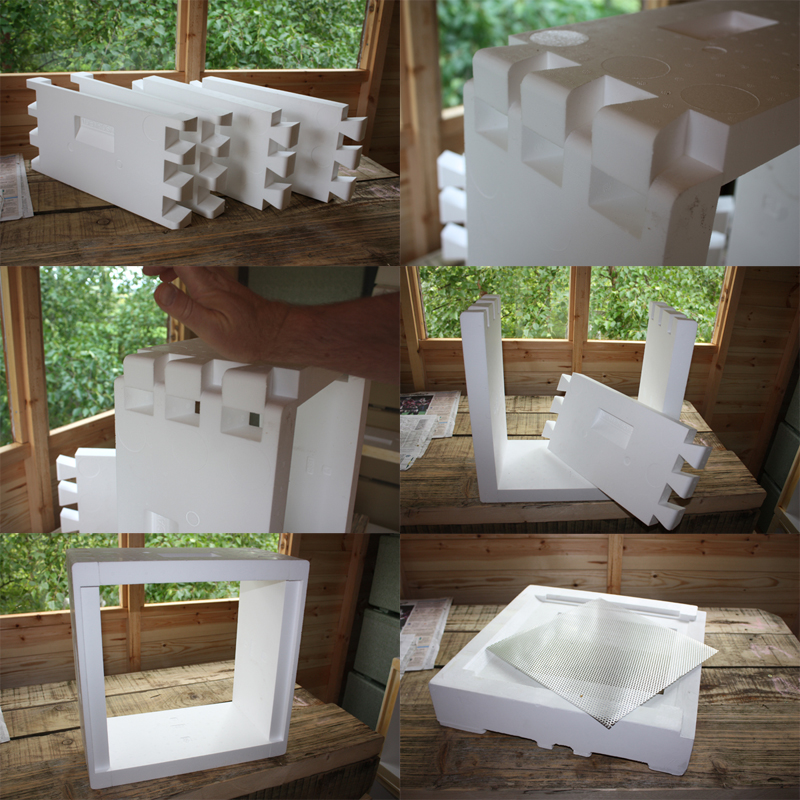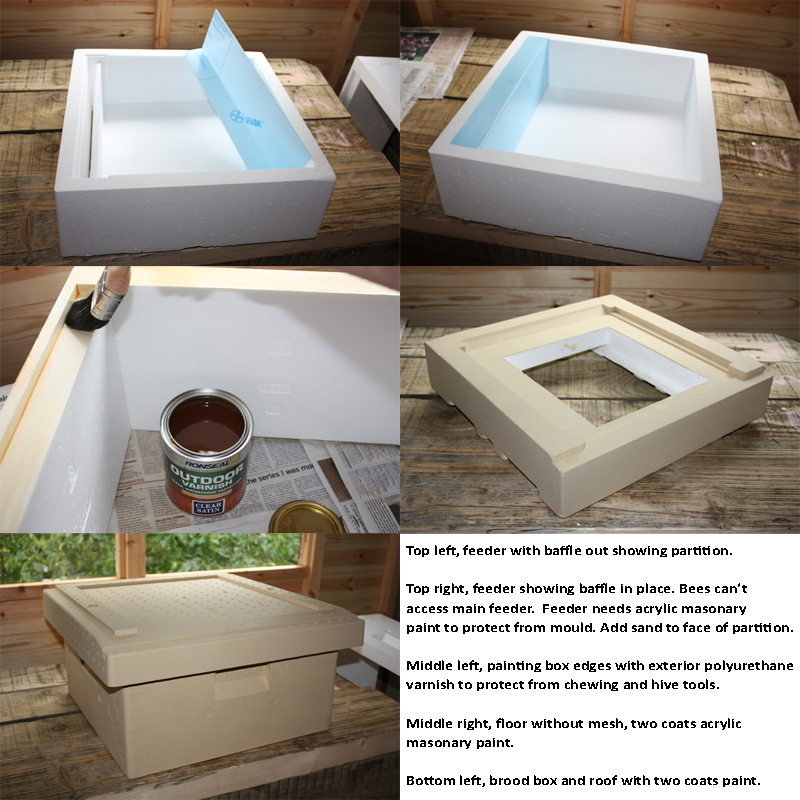ESBA Apiarist
How to assemble your brand new Denrosa/Swienty Poly Hives
by , 21-05-2011 at 12:42 AM (70884 Views)
Tools: two hands. Paint brush. Radiator paint roller and paint tray. Hammer and roofing nails to fix mesh.
Time: one minute to assemble a box. Four sessions to complete painting (time depends on the care you take).
1. Admire the sleek outlines, the craftmanship and the light weight compared to timber. Ignore the lack of biodegradability. Note that the brood box pieces come in two types, tapered lugs (front and back panels) and straight-sided lugs (side panels).
2. Push straight-sided lugs into tapered lugs.
3. Whack 'em in with the heel of the hand (easy peasy).
4. Make sure that you finish with the straight lugged piece otherwise you might have to take it apart. I'm told that broken lugs can be be repaired with a 3" nail and glue.
5. Admire the finished product which should have taken no more than 1 minute to assemble.
6. Floor? All you need do is nail in the mesh with half a dozen roofing tacks. Do it later.
7. Feeder? One piece plus a plastic cover. All you need to do is paint the slope bees crawl up and down (the one on the right side of that partition) and sprinkle sand on it for bee traction, and also paint the inside of the feeder to stop syrup seeping into the feeder and causing mould. Note with a smile that the plastic cover/baffle was made by Bayer.
8. Put the feeder baffle in place to see what it looks like but this box needs painted internally.
9. Paint the rims and the insets for the frame lugs with polyurethane exterior varnish, to protect from bees' mandibles and hive tools.
10 & 11. Paint all the outsides with two coats of acrylic exterior masonary paint. I used B&Q paint, other makes are available. Murray uses oil paints instead. A radiator paint roller makes the job straightforward. The big boys find an industrial air paint sprayer and do it in quantity against a wall of disused drums and once the neighbours aren't looking.
If you are all wondering where to get them, Murray McGregor at Denrosa, Coupar Angus sells them. Roughly £15+VAT per unit. He's a (very) busy bee farmer rather than a retailer so plan your visit for the quieter months would be my advice. In perhaps a year there will be a more organised method of sale.









 Email Blog Entry
Email Blog Entry

